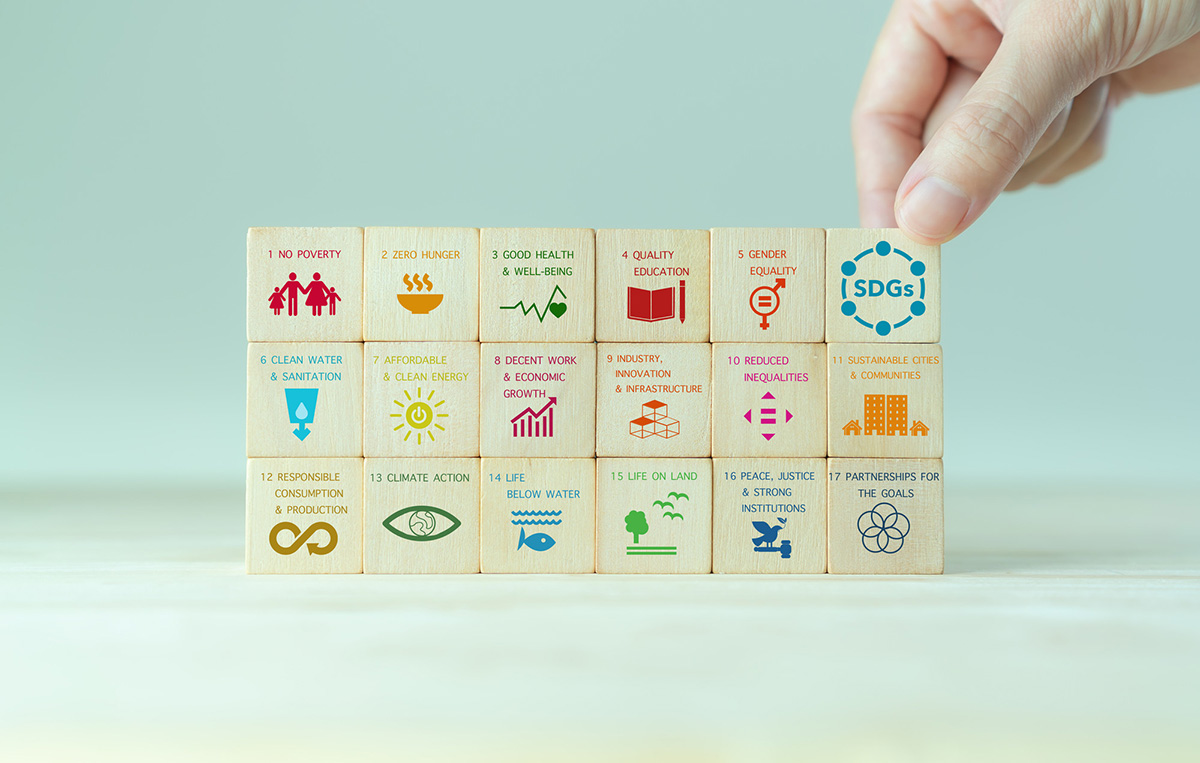NEW YORK, 5 September 2023 – “Excellencies, distinguished delegates, colleagues, it is good to be with you for the second regular session of the UNICEF Executive Board. Thank you to Ambassador Wegter, the Bureau, and our Executive Board members for your ongoing collaboration and steadfast support of UNICEF’s work for children – we appreciate it very much.
“As the Ambassador mentioned, we have much to accomplish over the course of this session, including decisions on 12 country cooperation agreements, the extension of 12 ongoing country programmes, an important update on UNICEF humanitarian action, discussions on financing for the UNICEF Strategic Plan, and a revised evaluations policy.
“During the session, we will also present our updated financial estimates for 2023 to 2026. This includes a review of 2022, a year in which our earmarked income reached $8 billion dollars – a record high.
“I look forward to working closely with you on our agenda over the next three days.
“Excellencies, as you know, this meeting of the Executive Board coincides with the opening of the 78th Session of the UN General Assembly. Critically, this year’s General Assembly session features the SDG Summit during the high-level week – where Heads of State and Government will review progress against the implementation of the 2030 Agenda, and the 17 Sustainable Development Goals. The Summit is a key opportunity to identify where we have gone off track, and where we must accelerate progress to reach the SDGs.
“This is an opportunity that the world cannot afford to miss. The lives of this and future generations of children are at stake, as is the sustainability of the planet and our place in it.
“The only way to meet the 2030 Goals is to focus our efforts on children, who are the most vulnerable, and often in the greatest need of services and support by prioritizing their rights and well-being as we strengthen social service systems, and by reaching the most vulnerable and disadvantaged children – including girls, children with disabilities, children living in poverty, and children affected by conflict and the climate crisis.
“Of course, progress requires a brutal assessment of the current situation. To this end, UNICEF has created a snapshot of progress to date on child-specific targets in the SDGs and identified areas for action.
“As the global custodian for children in the SDGs, UNICEF assesses progress based on five broad outcome areas, that every child survives and thrives, that every child learns, that every child is protected from violence, exploitation and harmful practices, that every child lives in a safe and clean environment, and that every child has a fair chance in life.
“In practical terms, this means measuring key indicators, which include access to quality education and basic services, violence against children, early childhood development, stunting, poverty, under-5 mortality, HIV, and immunization.
“The snapshot offers a decidedly mixed picture of both progress and backsliding against these key targets.
“On access to WASH services, for example, 2 billion more people have gained access to safely managed water over the last two decades. Yet this still leaves 1.8 billion people without safe drinking water in their homes. And it is children who are most affected by this. Each day, more than 700 children under age 5 die from diarrhoeal diseases due to a lack of appropriate WASH services. These figures indicate clearly that we are far from achieving universal access to safe water and sanitation – which is Goal 6 of the SDGs.
“On nutrition, we have seen a dramatic reduction in child malnutrition across many countries in the last twenty years. This includes a decrease in the number of stunted children by 55 million, or over one-third. Despite this progress, 149 million children under five still experience stunted growth. And, to our collective shame, 45 million children suffer from wasting. At the same time, more than 1 billion adolescent girls and women worldwide suffer from undernutrition.
“The current outlook on child immunization is also mixed. While immunization was once a success story, the pandemic directly contributed to an historic breakdown in immunization services. It also led to a precipitous drop in global immunization coverage – especially for children in vulnerable and hard-to-reach communities. The good news is that we are seeing immunization rates rebound, at least in some contexts. Last year, global immunization services reached 4 million more children than in 2021.
“But in most low-income countries, we are seeing coverage rates stall or continue to decline, especially for measles vaccination. Last year, nearly 22 million children missed the routine measles vaccination in their first year of life – almost 3 million more children than in 2019 – while an additional 13.3 million did not receive their second dose, placing children in under-vaccinated communities at risk of outbreaks. In 2022, large and disruptive measles outbreaks were reported in 33 countries.
“Measles can be a devastating disease for un- or under-vaccinated children. In severe cases, it can lead to pneumonia, diarrhea, blindness, encephalitis, and death. It can also weaken a child’s immune system, leaving them more vulnerable to other infections long after recovering from measles itself. The key point here is that measles is preventable with proper vaccination.
“Decades of progress for children in other areas have also begun to unravel. In the last three years, the number of children living in multidimensional poverty has increased by 15 per cent to 1.2 billion globally, nearly 600 million children are not meeting minimum reading standards – 52 per cent more than before the pandemic, 10 million more girls are at risk of child marriage, and 1.5 billion children under 15 do not have social protection coverage.
“To achieve the 2030 targets on child-related SDGs, countries that are currently off-track will need to rapidly accelerate progress. In many cases, countries will need financial and technical support to do so. Reaching some outcome areas, such as ensuring a safe and clean environment and the Paris Climate goals, will require historic levels of acceleration on a global scale.
“We believe such acceleration is possible. But it will require tremendous political will, investment, and collaboration across borders. It will also require the determination to overcome some of the most difficult challenges and intractable crises in recent history. Like the grueling conflicts in places like Haiti, Myanmar, Sudan and Ukraine – affecting more than 400 million children in conflict zones globally. Or the intensifying consequences of climate change from record heatwaves and catastrophic drought, to stronger storms and devastating floods.
“We are also confronted with growing inequality within and between communities and countries. And of course, many governments struggling with inflation and the economic havoc wrought by the pandemic, do not have the resources to finance SDG acceleration sufficiently. The constant trade-offs between debt repayment, infrastructure investment, and social spending, pose significant barriers to child-focused public budgeting.
“Overcoming these challenges will depend on governments and the international community undertaking a series of key actions.
“First, governments should significantly increase social spending in areas such as health, education, and social protection. National budgets and financing frameworks should prioritize and protect critical investments in children across all stages of childhood – to meet children’s evolving needs.
“Second, governments and the international community should increase investments to develop and implement climate mitigation and adaptation strategies and to ensure that service delivery systems are resilient to shocks. With more than 1 billion children living in countries at extreme risk to the impacts of climate change, the need for action has never been more urgent.
“Third, low and middle-income countries will need financial and technical support to increase spending on social services. High-income countries should increase financing available to low and middle-income countries through ODA, climate finance and development lending. It is also essential to establish more equitable and affordable access to financial markets, and debt rescheduling.
“Next, the SDG’s commitment to ‘leave no one behind’ means acceleration efforts must focus on reaching the most vulnerable groups.
Financing solutions should address their rights to health, education, social protection, and other services.
“Finally, we need to significantly improve data collection and analysis – at community, national and global levels. Data plays a critical role in shaping policies and driving action. Policymakers and implementing agencies need to have a clear picture of who the excluded children are, and what barriers they face. We need quality disaggregated data to determine the concrete actions needed to reach the SDG targets.
“UNICEF supports national development plans by investing in systems, reinforcing national capacity, and addressing issues of equity. We have also aligned our programmatic work with the SDGs since their adoption.
“Our most recent Strategic Plan is the second to fully integrate the SDGs and SDG indicators into our corporate results framework. And we closely follow 35 SDG indicators to ensure that our programmes for children – across health, nutrition, education, protection and WASH – are supporting country-level progress towards achieving the SDGs.
“In all humanitarian contexts, UNICEF and our partners are on the ground working to reach children in need. We operate across the humanitarian-development nexus, providing immediate life-saving assistance while also strengthening the systems that children rely on – like health care, water, sanitation and education – to support development goals.
“Moving forward, UNICEF will continue to work closely with Governments, the private sector and our partners to drive SDG acceleration, and to create lasting positive change for the world’s children. To do that, we need the right support to deliver results – especially for the most vulnerable.
“This means timely, predictable and flexible funding.
“We are witnessing stagnating rates of ODA, and a steady decrease in core resources. Core resources – as you all know, are the lifeblood of UNICEF – help us to provide countries and communities with support that contributes to their long-term resilience and development. Through timely, predictable and flexible funding, we can respond quickly to emerging crises, anticipate future risks, and allocate resources where they are needed most.
“We appeal to Member States to lift stagnating core resources, currently down to 14 per cent of total income, to meet the Funding Compact commitments. These are especially important given growing pressures on ODA. From our side, we are hard at work with our National Committees and country offices to sustain and grow our level of core resources. But as needs grow, this is simply not enough.
“Excellencies, we also look to you, our Board Members, to put children at the heart of achieving the SDGs in your own countries and to be strong advocates for children’s rights during the high-level week. This includes securing child-focused commitments at the SDG summit, the dialogue on financing for development, the climate action summit, the meeting on universal health coverage, and the meeting on pandemic preparedness and response.
“The consequences of not meeting the SDGs will be measured in children’s lives and the sustainability of our planet. In the coming days, we will have opportunities to accelerate progress towards meeting the 2030 goals … to accelerate progress for children. Let’s seize those opportunities together.
“I would like to take a moment to officially welcome our new Deputy Executive Director for Partnerships, Kitty van der Heijden, who you will hear from later today.
“Thank you in advance for your contributions and engagement over this session of the Executive Board. I wish us all a productive Board week, and a General Assembly session.
“Thank you very much.”
Credit:Source link



